23
3
You find yourself on a chessboard, as one does. You can see the exit but it is awfully far away and you would rather not walk all the way. Luckily some locals have offered you a ride. A Knight, a Rook, a Bishop and a King are all willing to take you to your destination, but seeing how this is a chessboard they must each abide by the rules of chess on the way to your destination. You would like to get out of here as soon as possible, whose offer do you accept?
Task
Given a arbitrarily shaped and sized chessboard and two points on the chess board, output the chess piece that can move between the two locations in as few moves as possible. Boards will not necessarily be continuous meaning that there could be gaps between sections of the board. Each of the four pieces (King, Rook, Knight, and Bishop) can move according to their standard rules in chess. The Queen and pawn pieces have been intentionally left out of this challenge.
I/O
You may take input in any reasonable format and you may output in whatever format you choose as well. Your input and output must be self-consistent. If multiple pieces can make it to the destination in the same number of moves you must output all of the pieces that can get there in the minimum amount of time. If none of the four pieces can make it to the end you may output anything as long as it is distinct from all other possible outputs. This could include outputting nothing or throwing an error.
Test Cases
A square indicates the starting point and a circle indicates the ending point.
Bishop
Knight
King
Rook
King, Knight
None
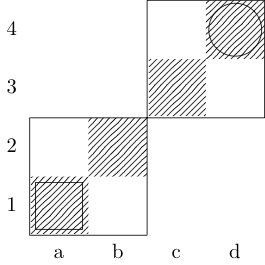
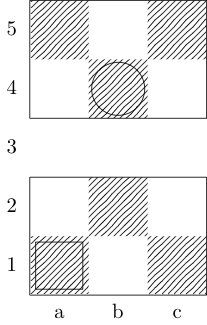
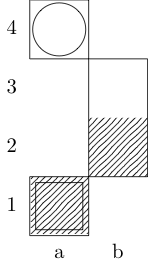
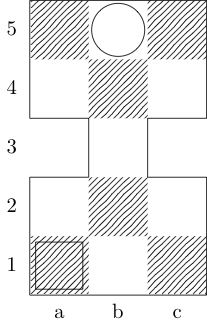
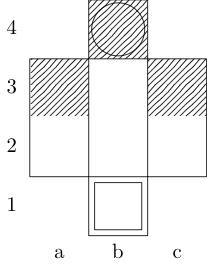
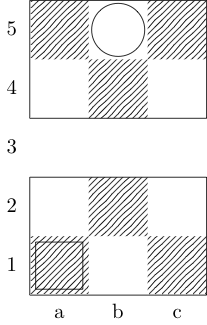
Nice. I like this but isn't an "arbitrarily shaped and size chessboard" a single entity? I don't really see how examples 2 and 6 fit in with this as it looks like they are two separate boards which only the knight can jump between. Maybe I am missing something? – ElPedro – 2017-03-16T18:43:20.177
2@ElPedro They are still a single board, its just not a continuous board. Part of arbitrary shape is that the boards can be non-continuous. – Post Rock Garf Hunter – 2017-03-16T18:46:48.730
For example 3, shouldn't it be "king, queen"? – user41805 – 2017-03-16T18:46:57.330
Thanks @Wheat. Not sure that was clear from the question but I understand now. – ElPedro – 2017-03-16T18:47:59.180
2@KritixiLithos To keep things interesting there is no Queen or Pawn. – Post Rock Garf Hunter – 2017-03-16T18:49:25.417